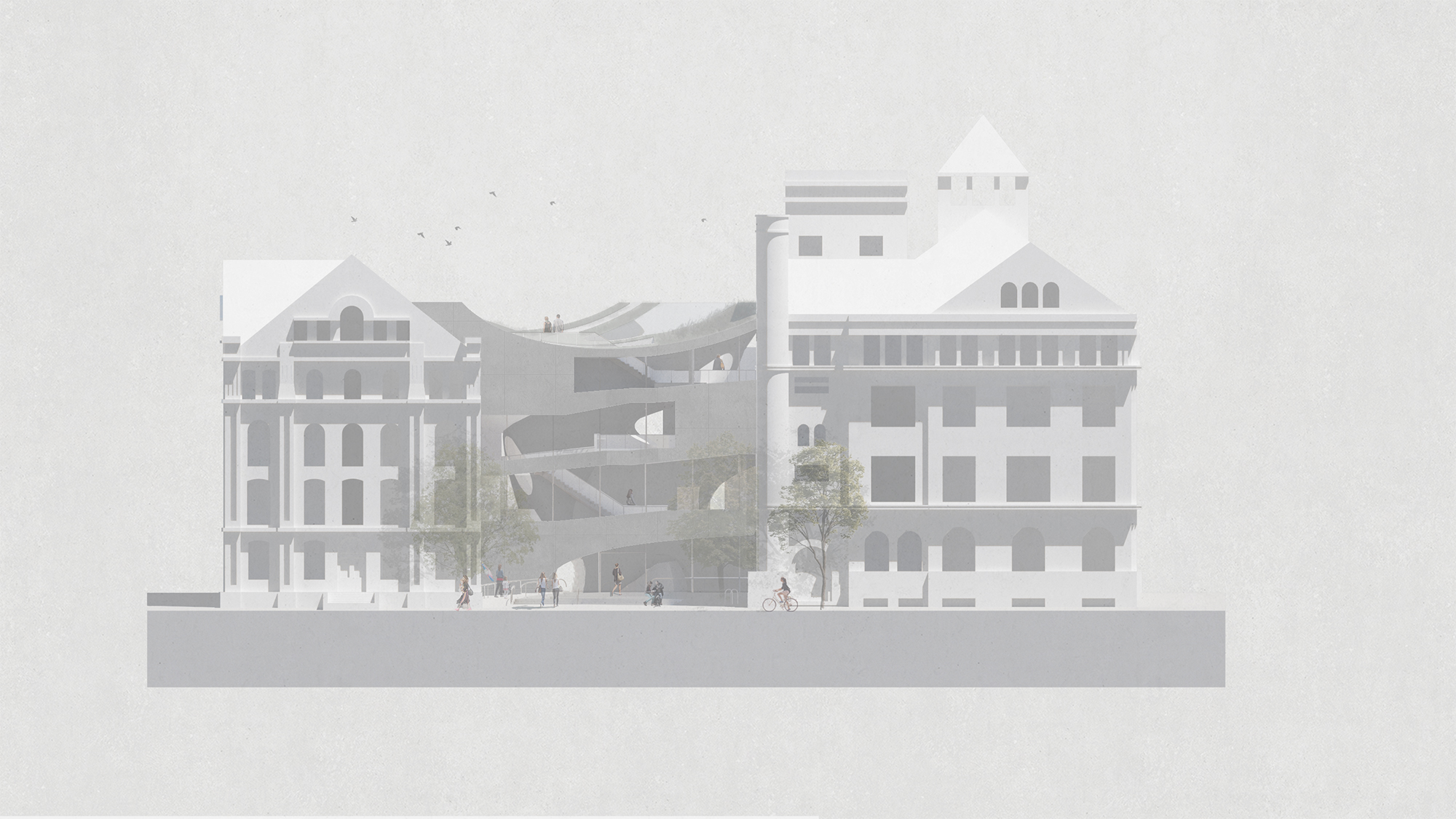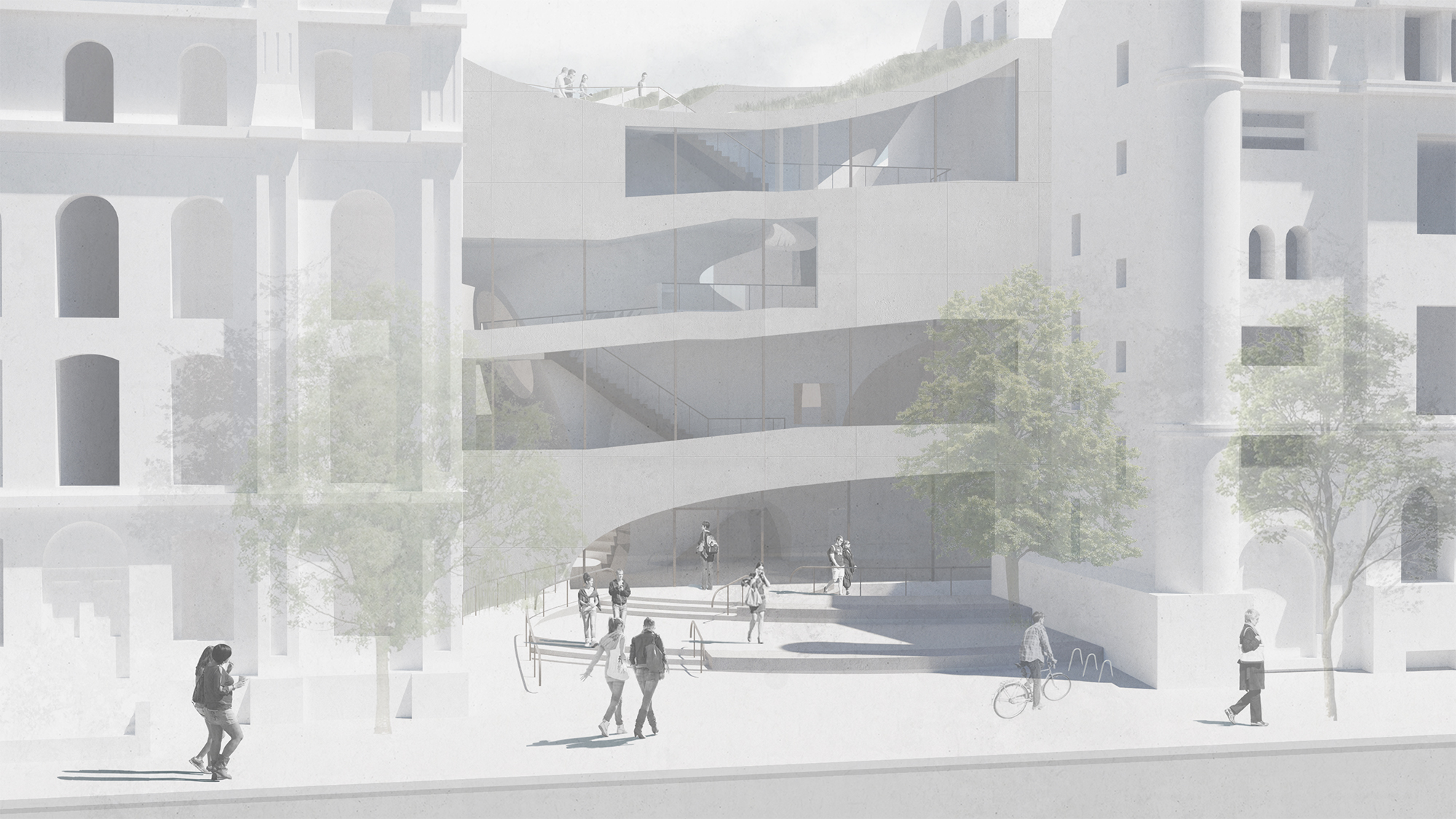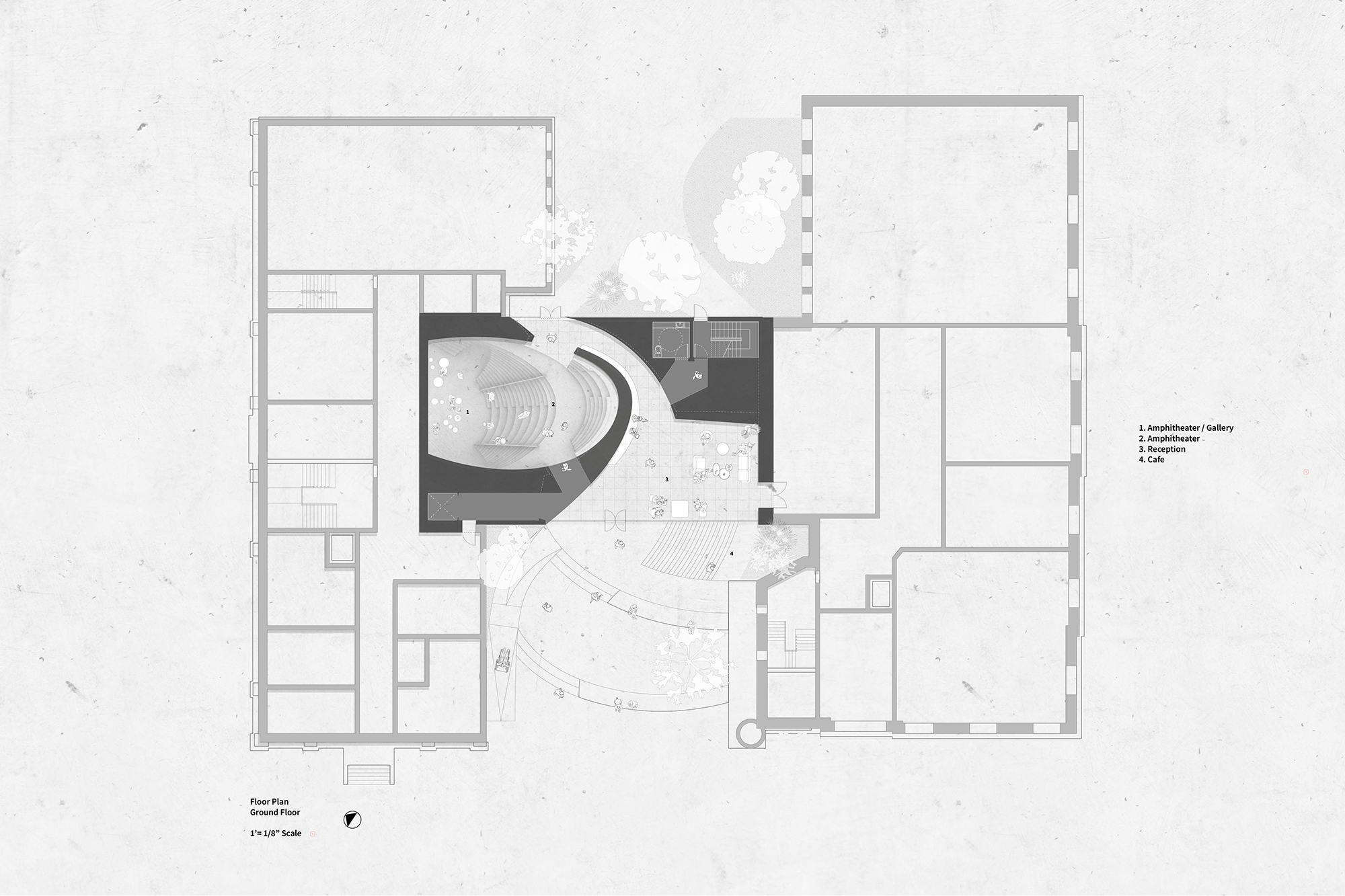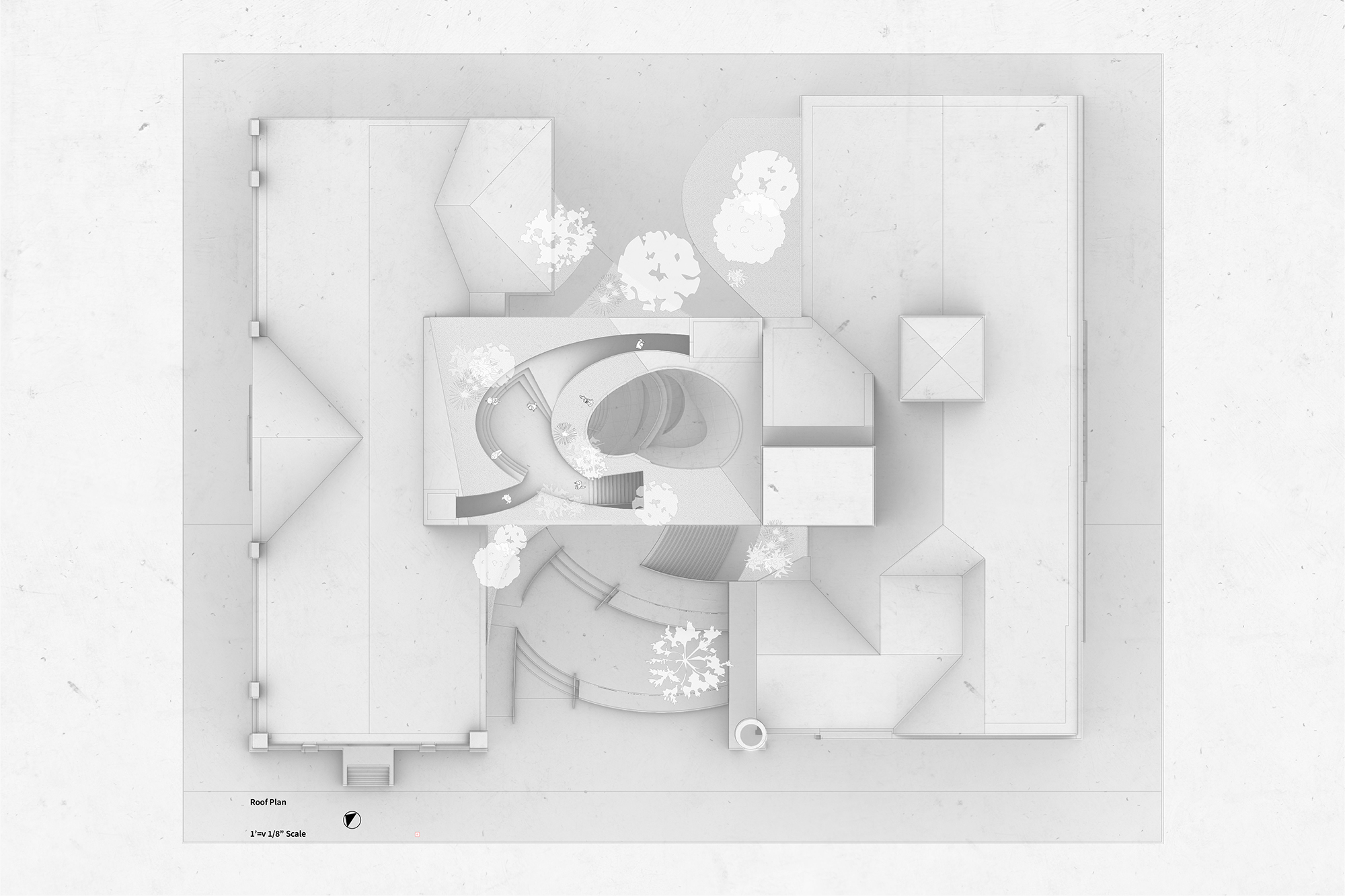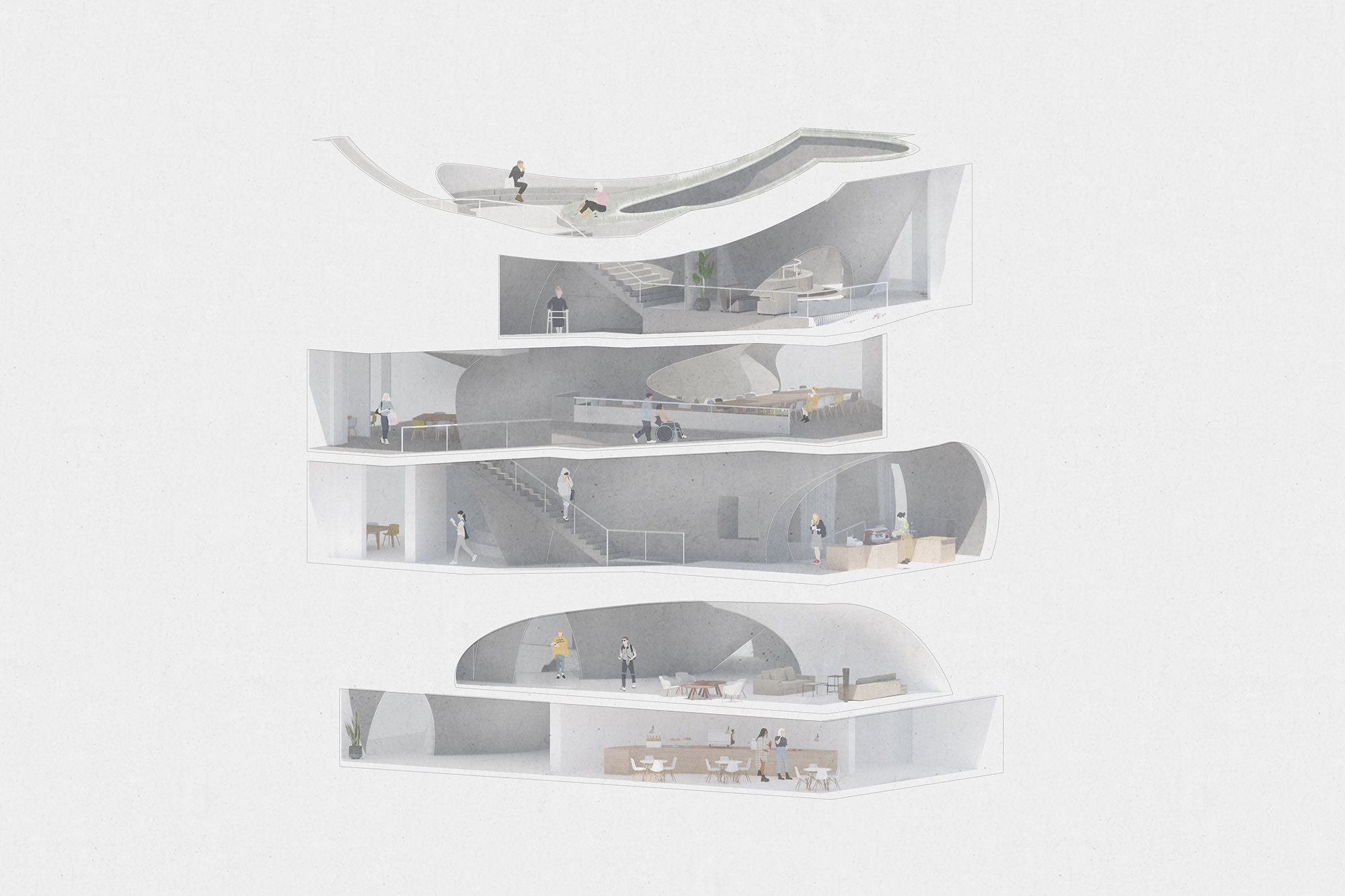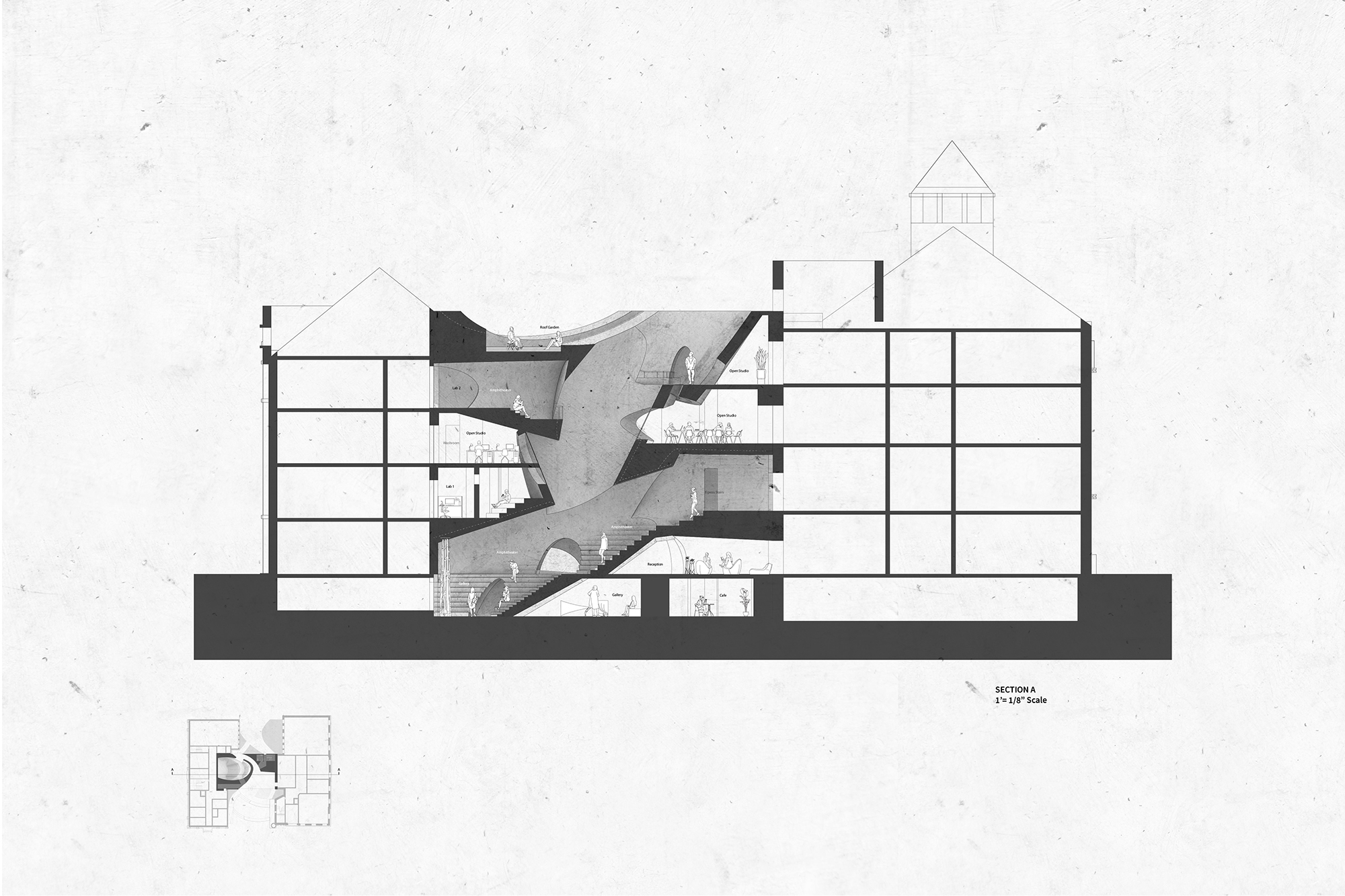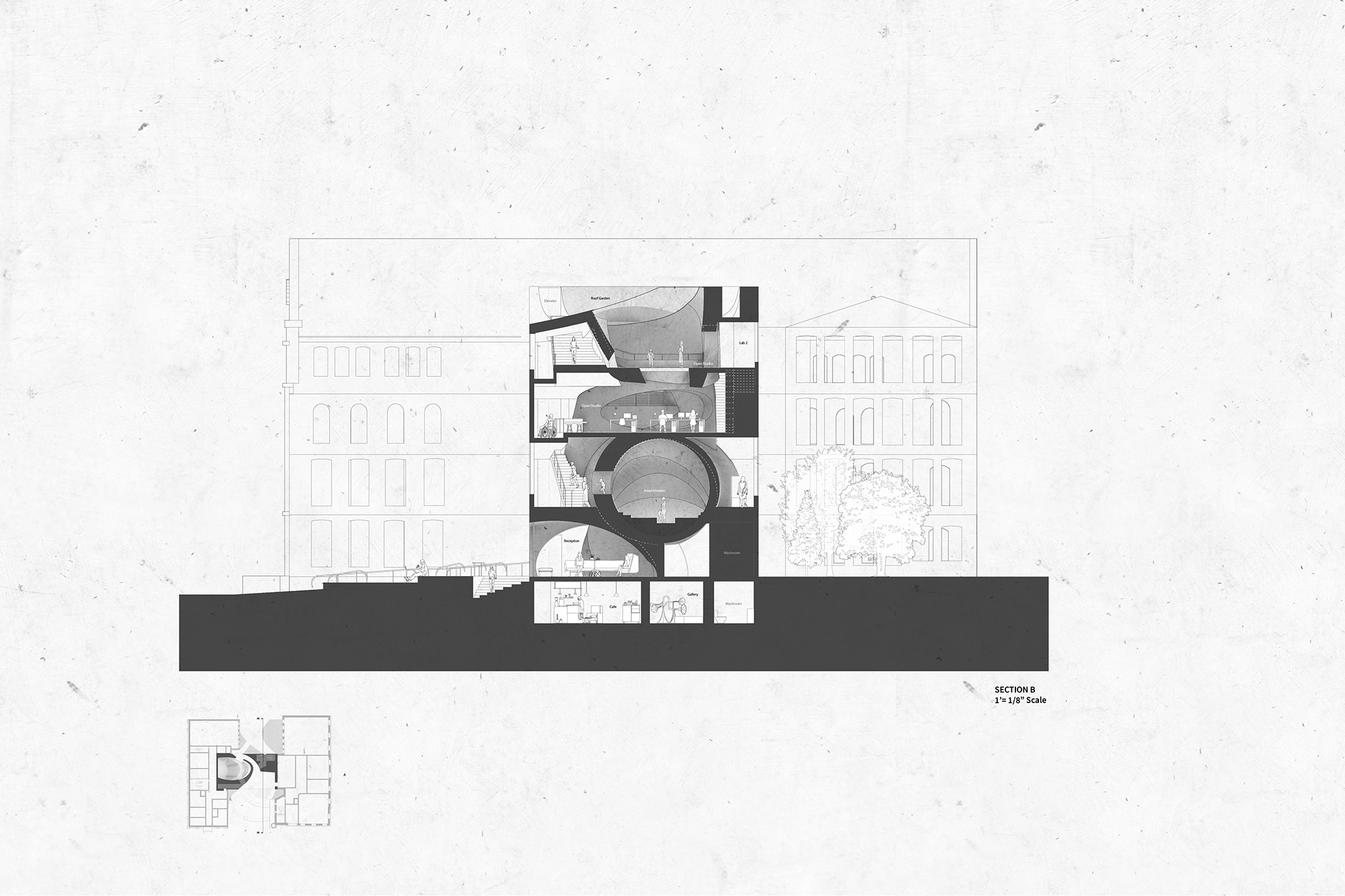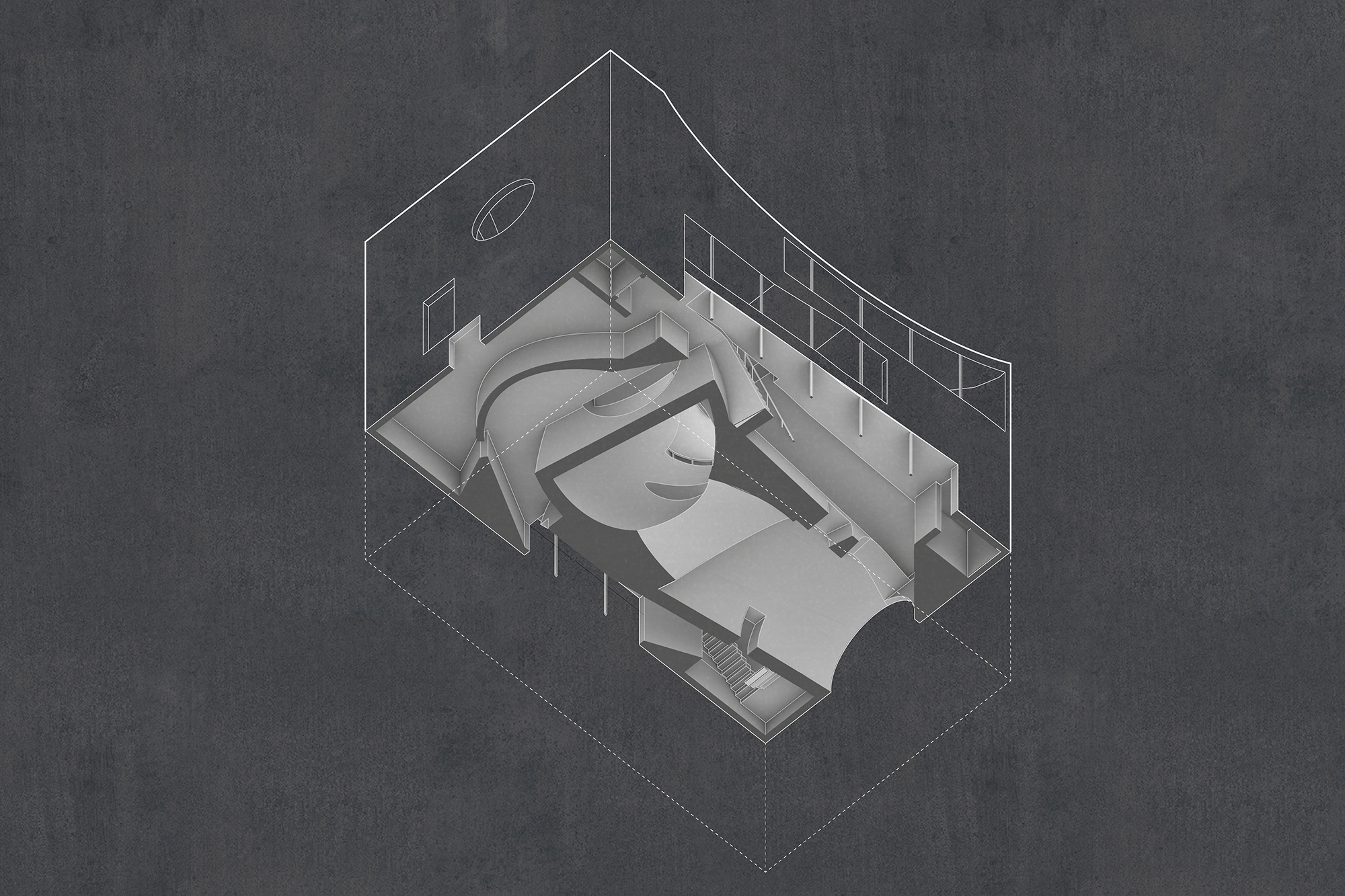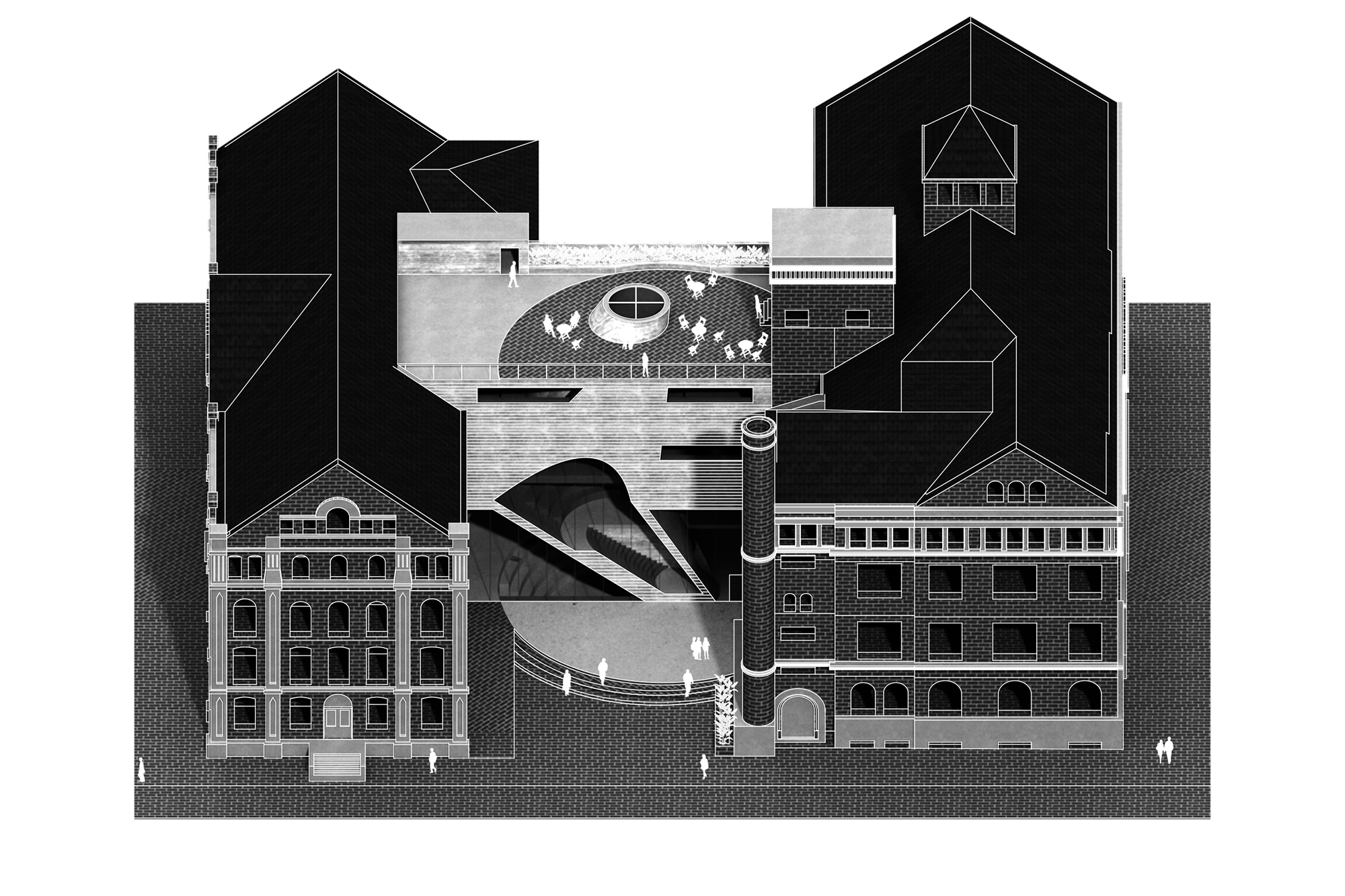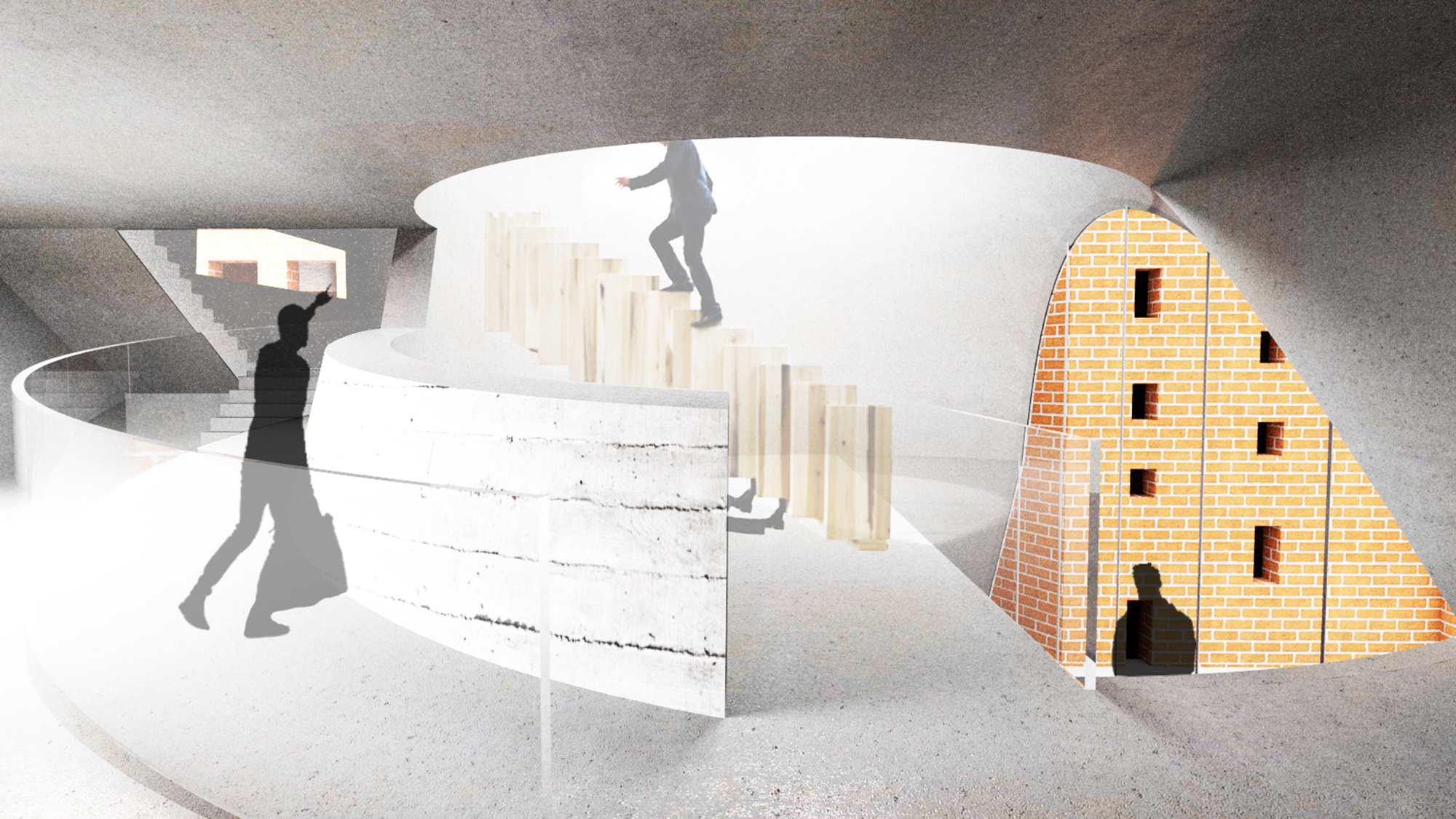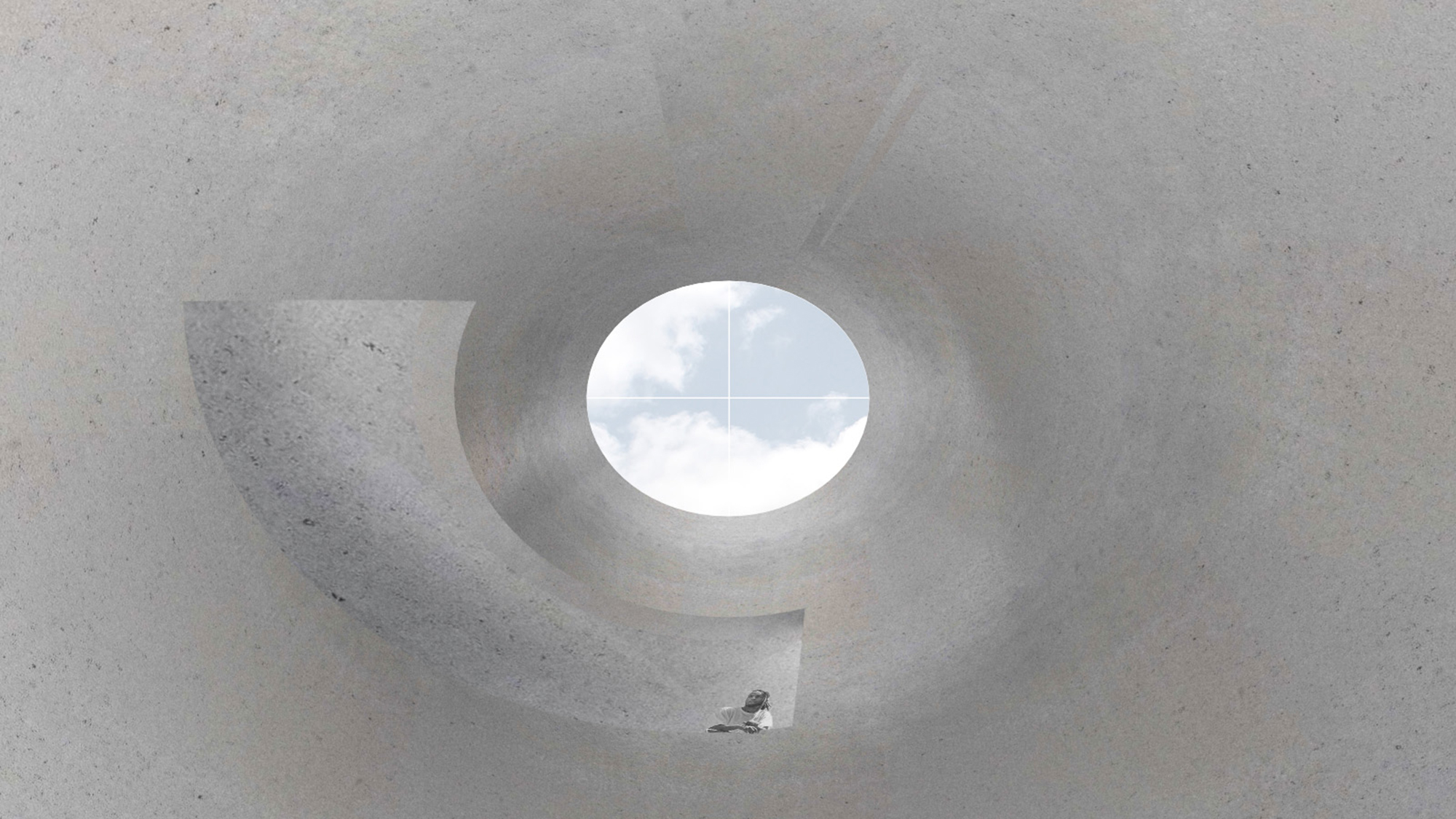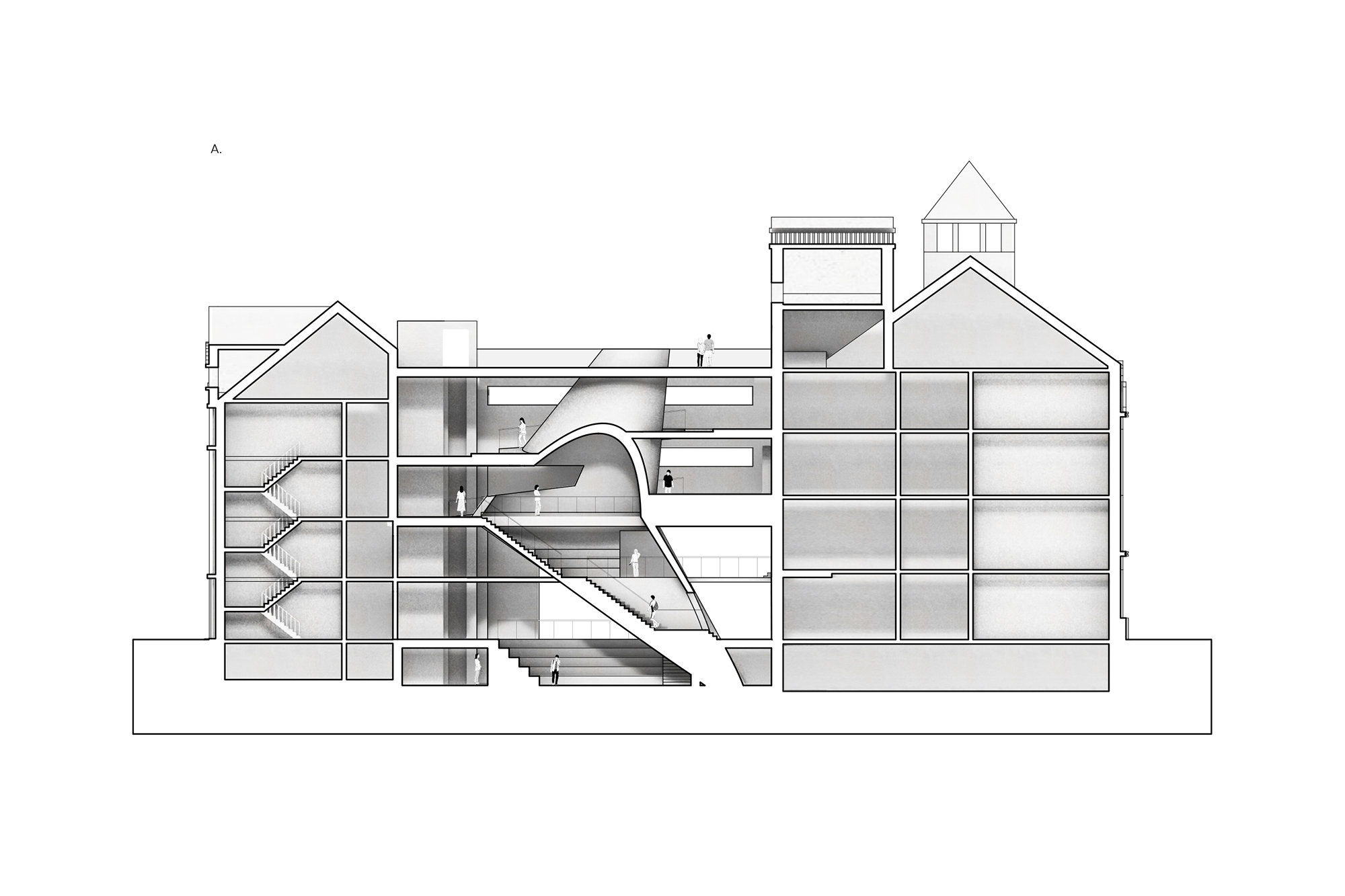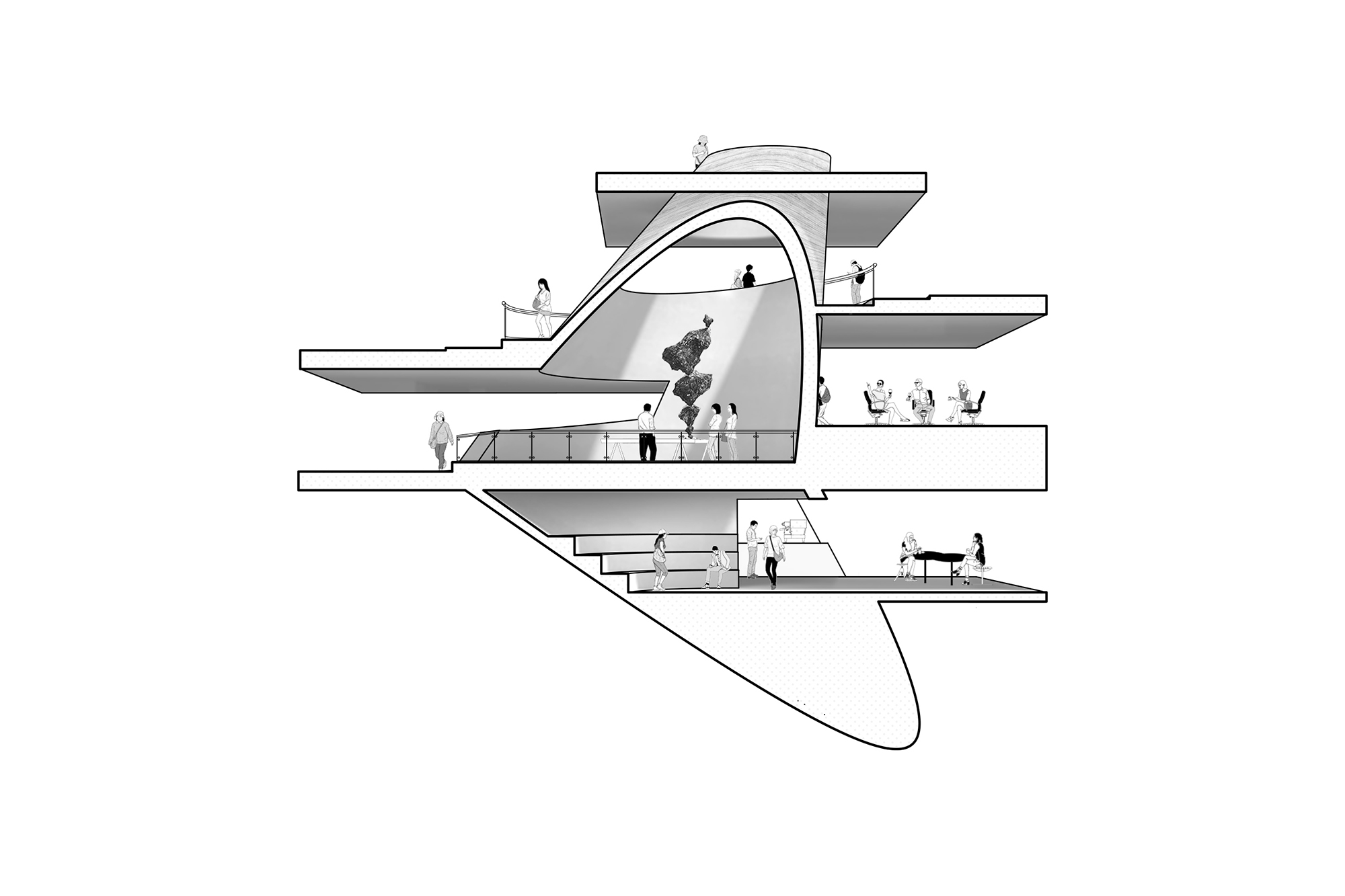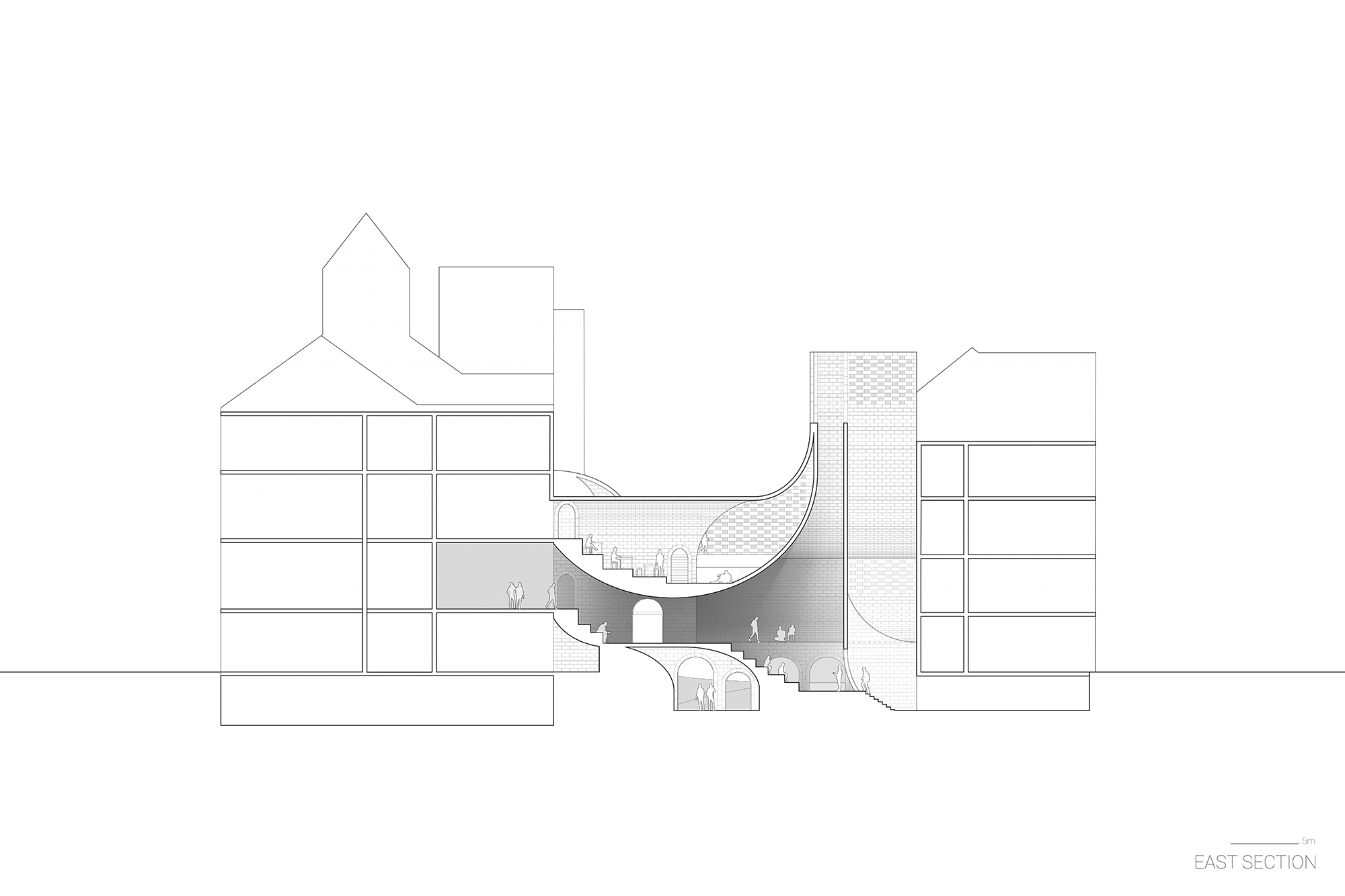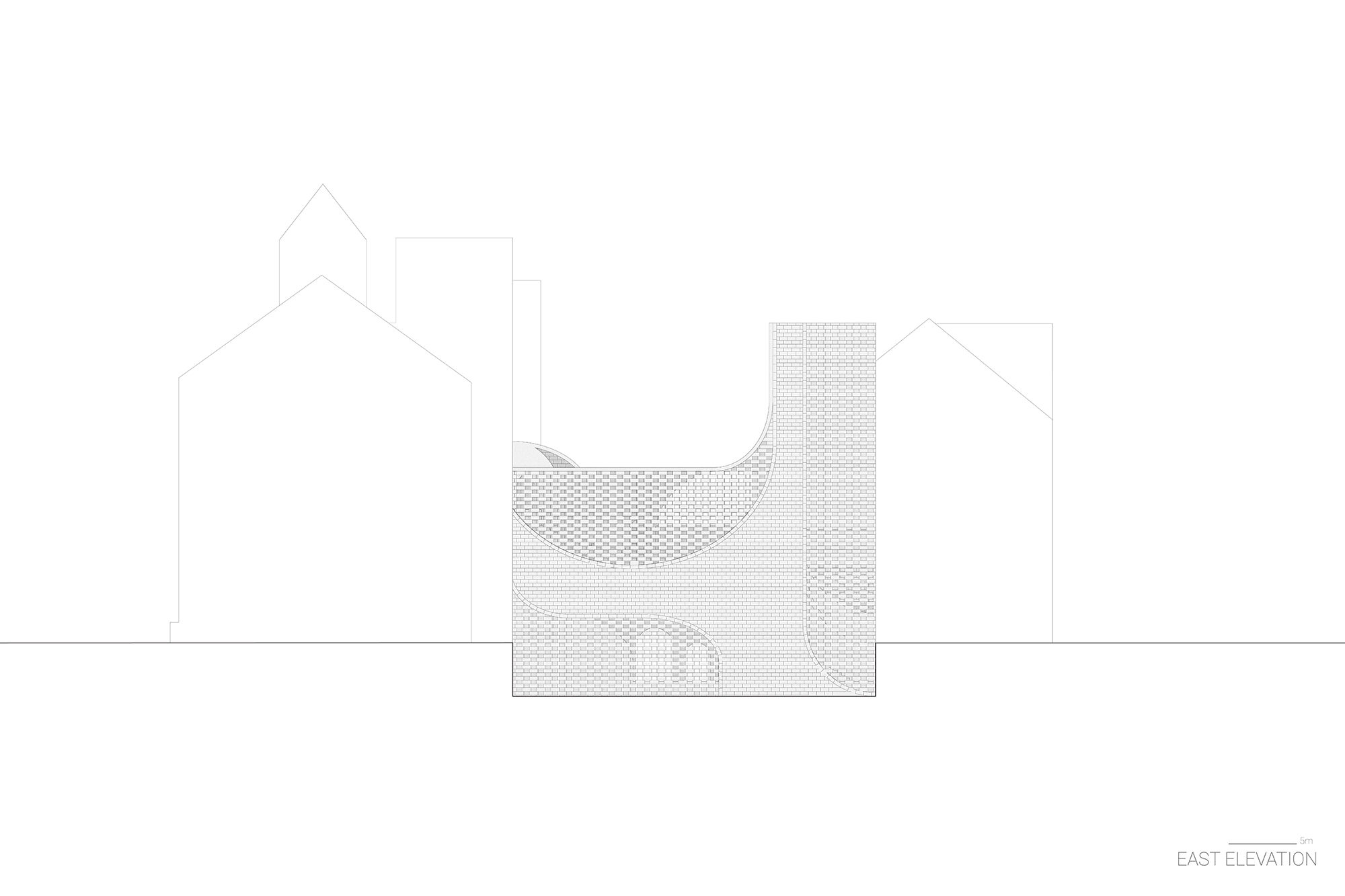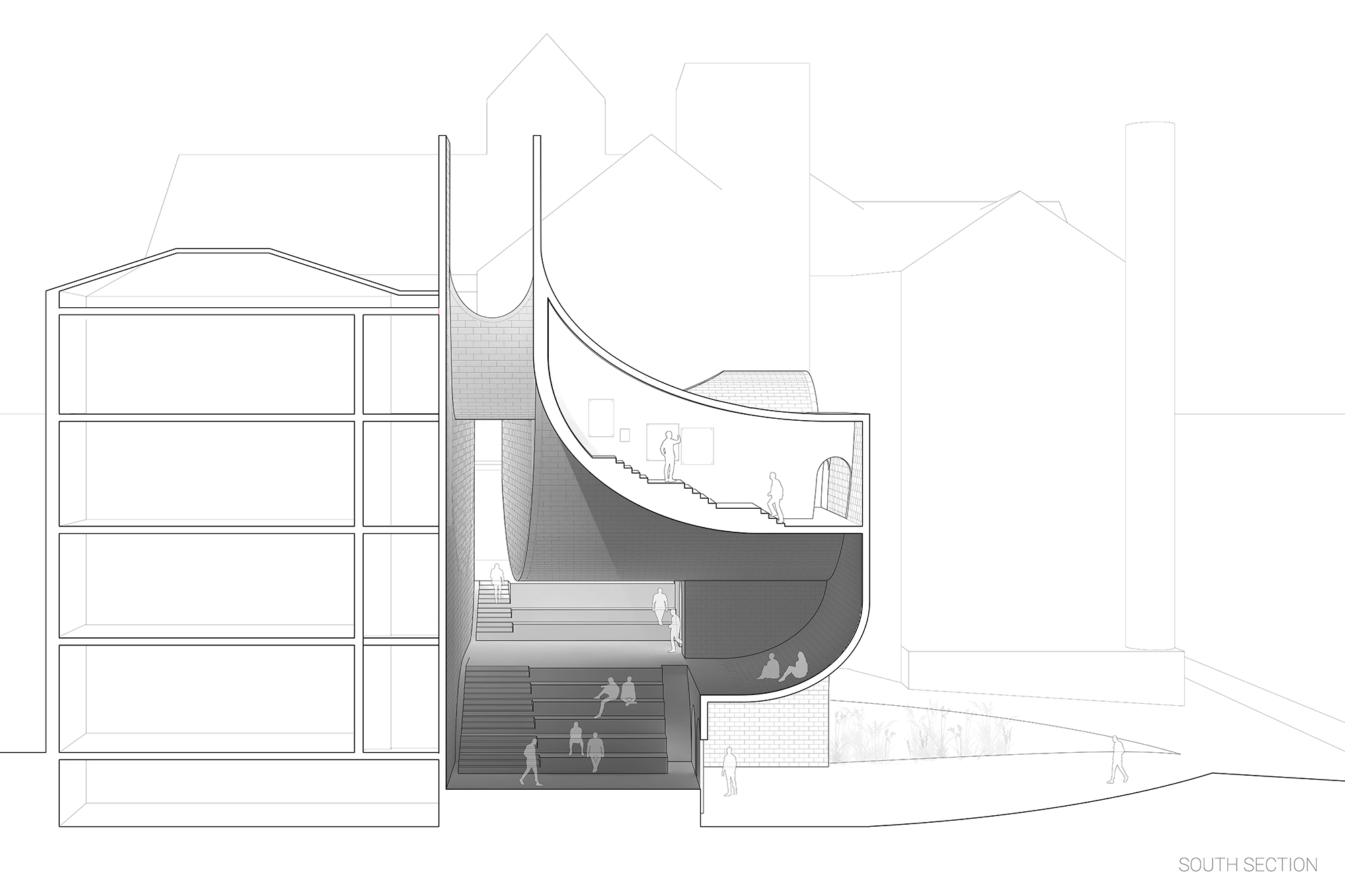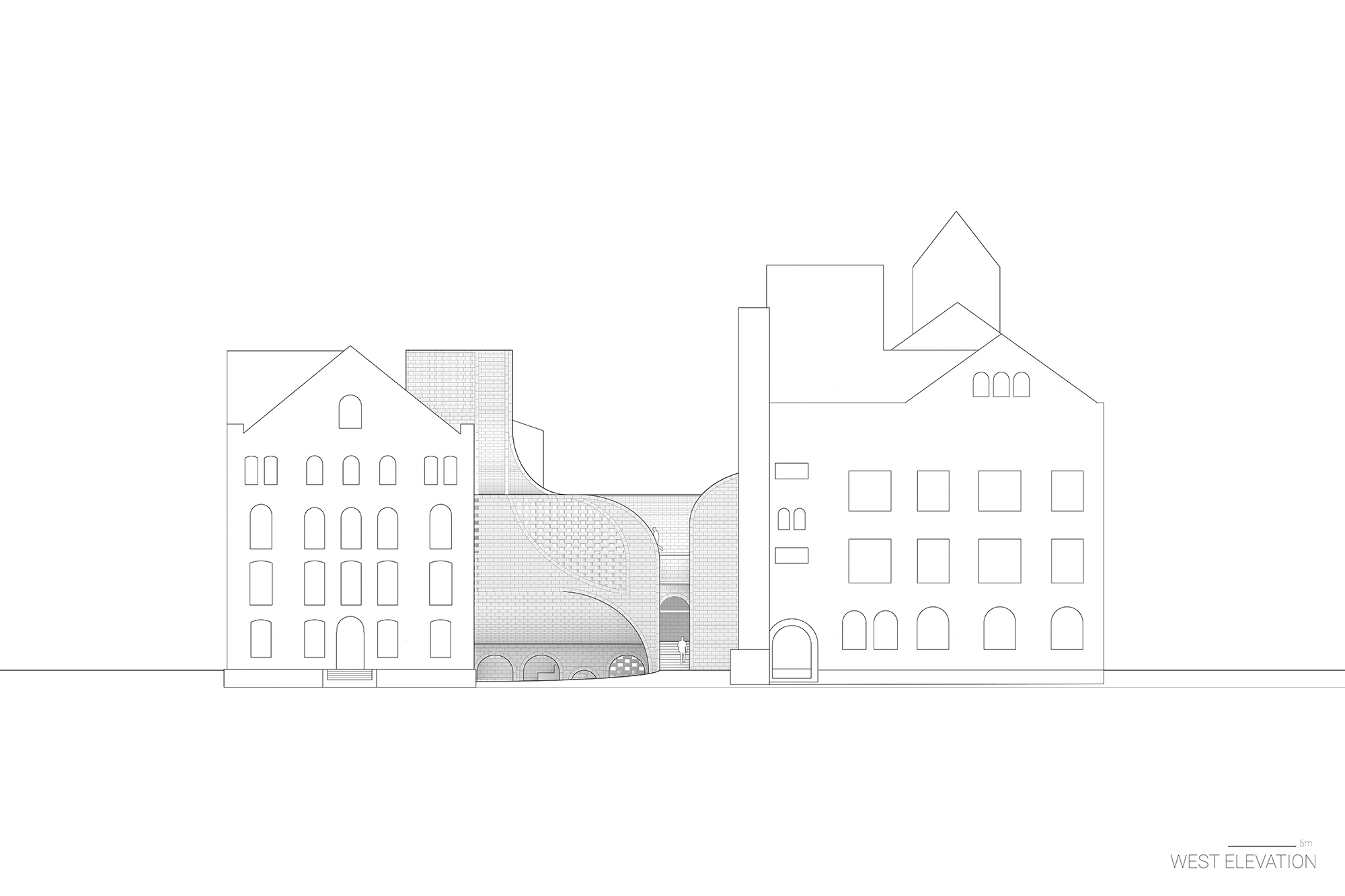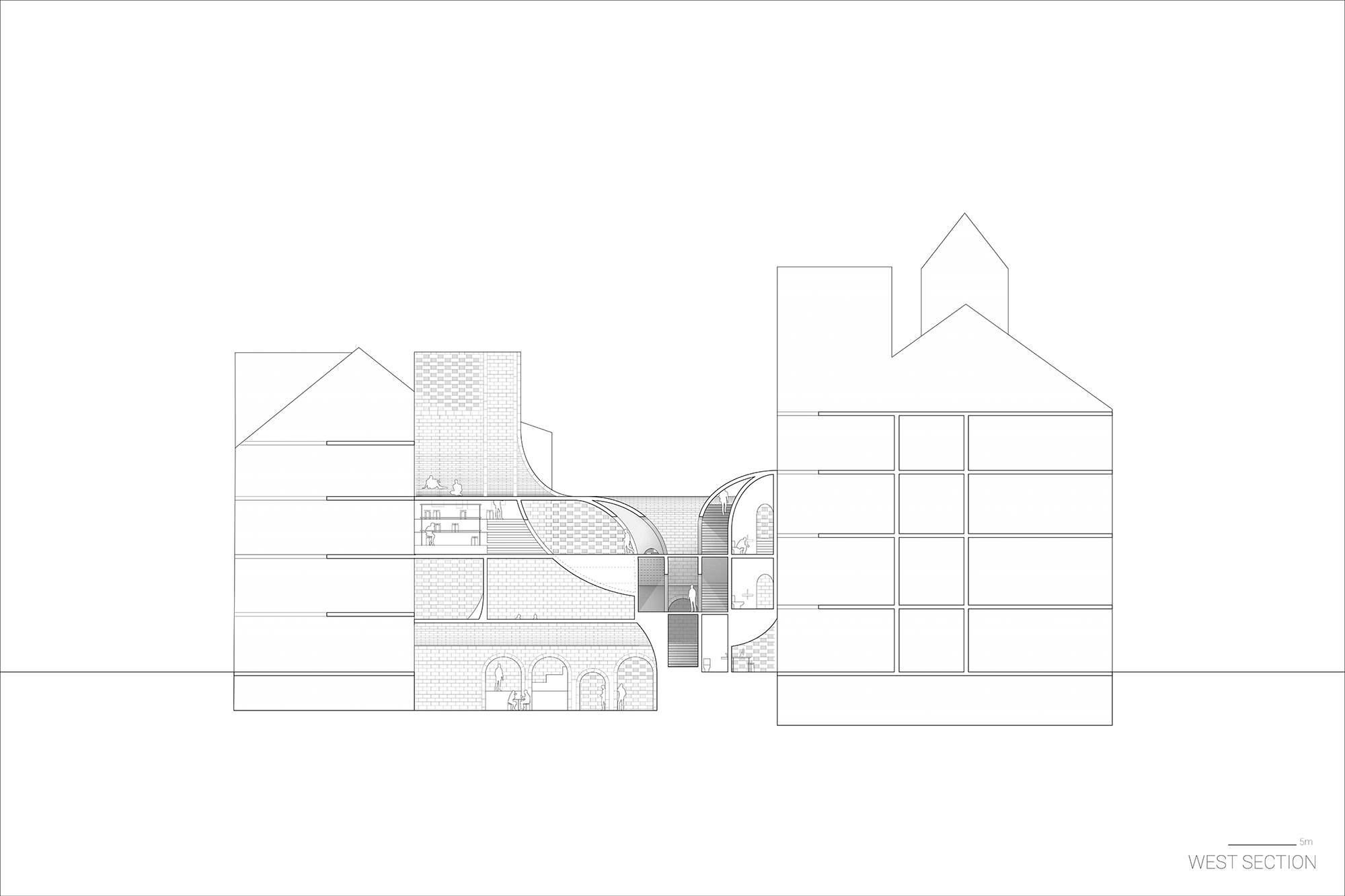ARC1011: Design Studio 1
Architecture Studio 1 is the first studio course in the Master of Architecture sequence. Students learn spatial skills related to problems of design. In their final assignments, they explore the formal, accessible, and scenographic qualities of collective vertical circulation in dimensionally specific sites.
Elva Hu
Elva writes: "This project aims to create a dynamic flow to allow visitors to navigate, while simultaneously allowing the structure to become a source of connection between the adjacent buildings. The central atrium is carved out of a sequence of configured cones, which are used to allow natural sunlight to travel through. By exploring solids and voids, the atrium serves as an open amphitheatre for major gatherings. The building uses frameless glazed walls to expose its internal structure, helping it blend seamlessly with the street."
(Instructor: Miles Gertler)
Liam Caldwell
Liam writes: "By using reciprocating cones as a formal device, this project conceptually 'funnels' activity towards the heart of the building and integrates light and collectivity between two existing academic structures. Taking cues from the cones, an inverse relationship between occupiable solid and illuminated void is established. The program is organized alongside these concepts, with spaces of gathering produced within the lit void and introspective studio spaces within the solids. The cones themselves are viewed as both sculptural and pedagogical. Opportunities for installations within the cone are presented, while the exteriors are used for studio critiques."
(Instructor: Tei Carpenter)
Erin Jeong
Erin writes: "Light Wells uses conditions of light as a driver for the programming of a building that aims to connect two existing schools on the site. Public spaces, such as the auditorium and the main circulation, are lit using large, dramatic skylights, focusing pubic views in a particular direction, and creating a spatial hierarchy. On the other hand, the private spaces, such as studios, are lit through diffused perforations on the facade, which create a brighter, more evenly lit environment."
(Instructor: Vivian Lee)


